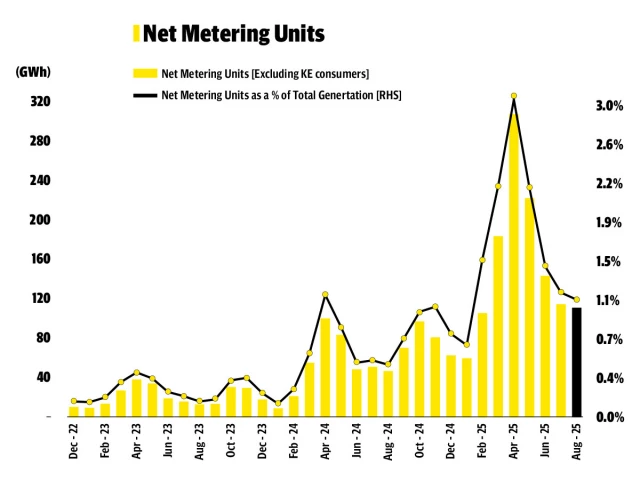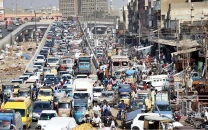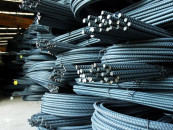Why your solar-powered house paid K-Electric big in August
It wasn't just cloud cover

If your electricity bill went up in August even though your rooftop is covered in solar panels, you can blame Mother Nature for the price tag, but only up to a point. It was hot, the sun shone, but you still ended up paying K-Electric for grid power.
For example, my house is 1100sq yards, and half the roof has solar panels installed. In August, our solar generation was 1304kWh (kilo watt hours), and we ended up paying a much larger bill than usual. Contrast that with September, when our generation went up to 1503kWh, and our bill went down.
Solar power’s contribution to Pakistan’s grid slipped in August. It provided only 0.7% of the total of 14,218 GWh (giga watt hours) produced that month, according to research firm Arif Habib Ltd.
“This August had heavy rains, and solar generation is dependent on the levels of sunlight,” said Dr Javed Iqbal, the director of the Institute of Space and Planetary Astrophysics at the University of Karachi. “So the major culprit for poor solar generation was cloud cover.”
Read: Pakistan’s solar boom sparks water strain, fiscal woes
Sindh’s overcast skies, high temperatures and discrepancies in how solar power is reported are thus to blame. “We see a rise in solar generation for September, and we have also seen less cloud cover overall,” he added. “So it’s safe to say that low solar generation is mostly attributed to higher cloud cover.”
Rainy days
August 20 and 21 were the wettest days on record in Karachi. The weather station at the Karachi airport's old terminal, for example, clocked 163.5mm, the highest precipitation seen in that area since 1979, according to Anjum Nazir, the spokesperson for Sindh’s meteorological department. The lowest amount of rainfall was recorded at the Bahria Town and Orangi Town, at 5mm and 81mm, respectively, while the highest rainfall recorded for the 20th was 178mm at Gulshan-e-Hadeed.
Heavy rain lowers solar irradiance or the strength of sunlight received by a surface per unit of area. Low irradiance lowers photovoltaic - solar - generation. This means that the kind of clouds over an area can affect the strength of sunlight. Thick monsoon clouds depress irradiance in high percentages.
Safety valves
Most of Karachi faced power outages during the monsoon. This is because of something called “standard anti-islanding protection”. It is a safety mechanism that prevents an energy source from supplying the grid when it is down. Inverters tied to the grid shut off during a grid power outage. Rooftop panels stopped exporting power to the grid and stopped serving homes until the grid stabilised, which further lowered solar output.
Heat and dust levels
High heat levels also eat into how efficiently your solar panel works. A group of researchers from the Chengdu University of Technology and Imperial College London explain how the environment affects solar photovoltaic output. Panels lose around 0.5% per degree Celsius, limiting their productivity in hotter climates. This may be a smaller factor than cloud cover and outages, but it still affects midday solar yields.
The researchers also point out that air conditions, such as pollutants and dust, can shrink solar power generation. They can reduce solar generation by as much as 60%.
Underreported solar output
In conversation with a power utility official, I learned that solar generation has two aspects: behind-the-meter (BTM) and Net Metering.
"BTM is when a customer uses solar generation solely for self-consumption. No prior approvals are needed for installation, nor are there regulatory requirements for it to be reported," he said.
According to an energy snapshot by REN21, a global network focused on building renewable energies, a growing chunk of Pakistan’s solar boom is undocumented because in buildings with newer solar connections, when the power goes out, the building relies on solar to run itself directly. While this affects solar's measured output, the difference this would have is minimal, as this effect persists between months and wouldn't only lower August's measured output.
COMMENTS (7)
Comments are moderated and generally will be posted if they are on-topic and not abusive.
For more information, please see our Comments FAQ



















I am proud of you son